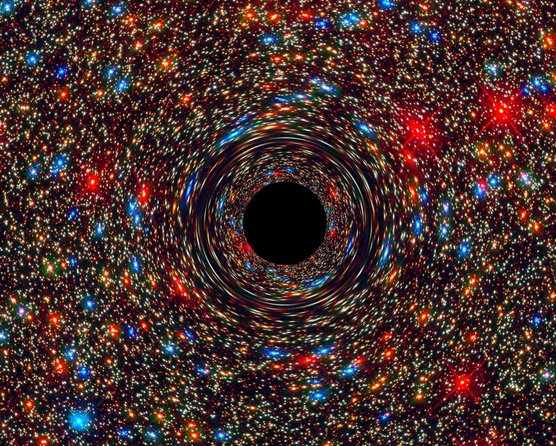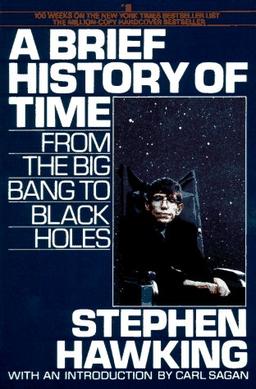Books and Black Holes: Stephen Hawking's Language Helps Us Grasp the Cosmos

On April Fools' Day in 1988, a modern science classic by world-renowned theoretical physicist and cosmologist Stephen Hawking was published. Called "A Brief History of Time," it set off a wave of public curiosity about humanity's place in the universe.
Many are remembering the contributions of Hawking's brilliant mind to scientific inquiry following his passing early Tuesday morning (March 14). Those inspired by his book and his legacy in cosmology are now picking up where Hawking's genius left off.
One of Hawking's most significant contributions to science is a theoretical solution to one of the biggest conundrums of physics. [Stephen Hawking's Best Books: Black Holes, Multiverses and Singularities]
This conundrum arises from two of the most important theories in physics. Albert Einstein's general theory of relativity explains how matter behaves when objects are very large, and the theory has been proven to work, explaining, for example how light bends as it crosses the universe. The theory of quantum mechanics, meanwhile, explains how matter works on a small, subatomic scale. But general relativity doesn't work in the small scale, and quantum mechanics cannot explain forces, such as gravity, that operate on the large scale.
When Hawking introduced the mathematical concept of black hole radiation in 1974, it seemed to offer science a way of using the two theories together.
"Hawking's radiation result in 1974 is a major insight, because it showed that we can explore this problem of reconciling quantum mechanics with gravity in a mathematical way," said Paul Sutter, astrophysicist at The Ohio State University, in an interview with Space.com.
"In the decades since then, some theoretical physicists have continued to explore these boundaries and intersections of what appears to be a very simple question: What happens when you have strong gravity on a small scale?" Sutter said. "It's a simple question but not an easy question, and Hawking and others are masters at navigating the complexity of that kind of question. It was really one of the big breakthroughs of early on, to show how to develop the language to approach these problems."
Get the Space.com Newsletter
Breaking space news, the latest updates on rocket launches, skywatching events and more!

Hawking provided scientists and science-enthusiasts alike with the language to better perceive the universe, and for physicists, this language was written in numbers. Although "Hawking radiation" remains to be proven with empirical evidence, his theoretical outline is being tested in creative ways. Those, said Sutter, include subjecting uncommon states of matter to ultracool temperatures to produce odd quantum states that, mathematically, could approximate what happens near the horizon of a black hole. Beyond that border, matter and light can no longer escape.
Hawking's skill at communicating science to the public is what inspired Sutter's cosmic curiosity from a young age, Sutter said.
"I remember reading the book as a teenager. It was one of the books that led me down to the road to become an astrophysicist, a cosmologist," he said. "I think the book sets the template of, let's take a step back and think about these topics about black holes, talking about the early universe. These are incredibly esoteric, deeply mathematical, niche topics in physics … the more Hawking worked to popularize it, the more [the science] entered the mainstream and public discussion, where [now] you can walk up to anyone and say, 'Black hole!' or 'Big Bang!' and they'll know what I'm talking about. And that's incredibly powerful."
Follow Doris Elin Salazar on Twitter @salazar_elin. Follow us @Spacedotcom, Facebook and Google+. Original article on Space.com.
Join our Space Forums to keep talking space on the latest missions, night sky and more! And if you have a news tip, correction or comment, let us know at: community@space.com.

Doris is a science journalist and Space.com contributor. She received a B.A. in Sociology and Communications at Fordham University in New York City. Her first work was published in collaboration with London Mining Network, where her love of science writing was born. Her passion for astronomy started as a kid when she helped her sister build a model solar system in the Bronx. She got her first shot at astronomy writing as a Space.com editorial intern and continues to write about all things cosmic for the website. Doris has also written about microscopic plant life for Scientific American’s website and about whale calls for their print magazine. She has also written about ancient humans for Inverse, with stories ranging from how to recreate Pompeii’s cuisine to how to map the Polynesian expansion through genomics. She currently shares her home with two rabbits. Follow her on twitter at @salazar_elin.









